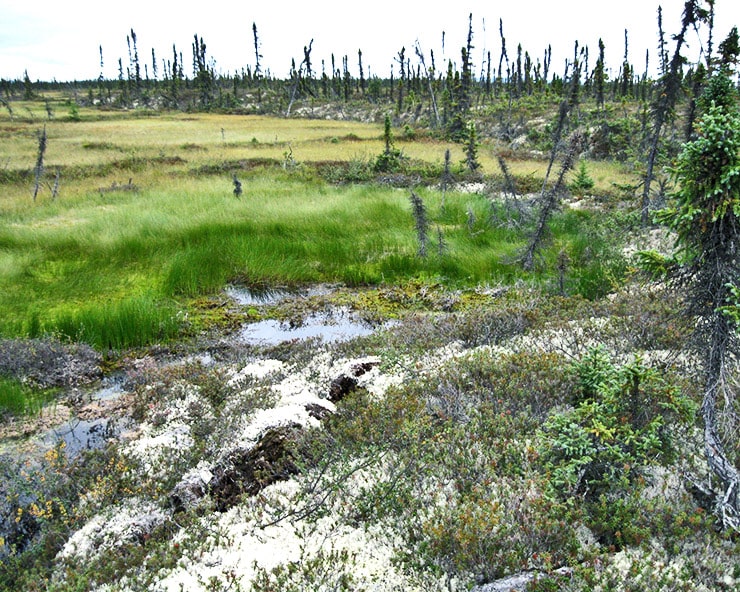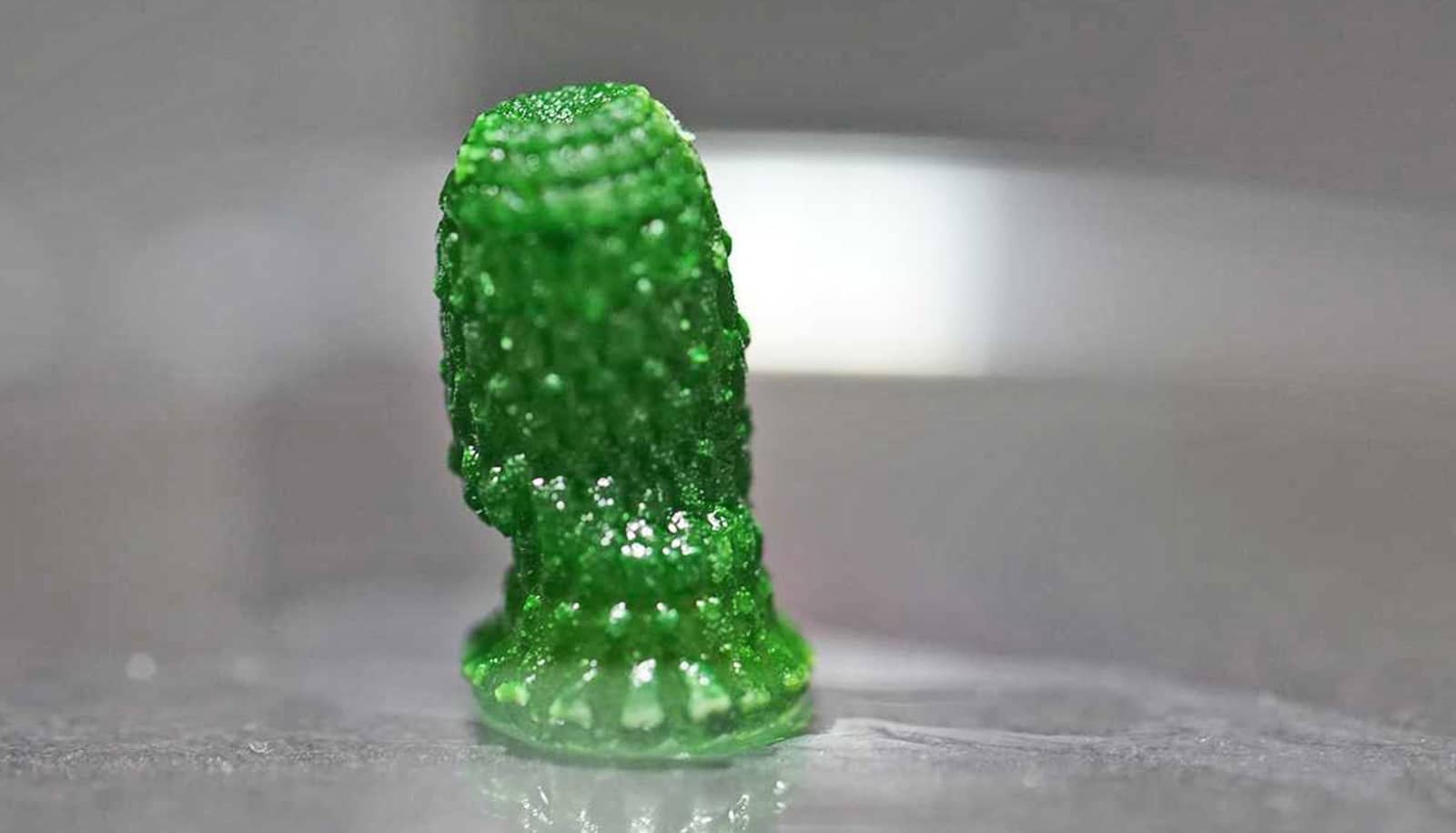With the right management, soil could “significantly” offset increasing global emissions by trapping carbon dioxide.
In two overlapping papers, researchers call for a reversal of federal cutbacks to related research programs to learn more about soil’s benefits and emphasize the need for more research into how—if managed well—it could mitigate a rapidly changing climate.

“Dirt is not exciting to most people,” says Rob Jackson, a professor of Earth system science at Stanford University, lead author of the first paper in Annual Review of Ecology, Evolution and Systematics article, and coauthor of the second paper in Global Change Biology paper. “But it is a no-risk climate solution with big co-benefits. Fostering soil health protects food security and builds resilience to droughts, floods and urbanization.”
Risks and promise
Organic matter in soil, such as decomposing plant and animal residues, stores more carbon than do plants and the atmosphere combined. Unfortunately, the carbon in soil has been widely lost or degraded through land use changes and unsustainable forest and agricultural practices, fires, nitrogen deposition, and other human activities. The greatest near-term threat comes from thawing permafrost in Earth’s northern reaches, which could release massive amounts of carbon into the atmosphere.
Despite these risks, there is also great promise, according to Jackson and Jennifer Harden, a visiting scholar in Stanford University’s School of Earth, Energy & Environmental Sciences and lead author of the Global Change Biology paper.
“If we lose momentum on carbon research, it will stifle our momentum for solving both climate and land sustainability problems…”
Improving how the land is managed could increase soil’s carbon storage enough to offset future carbon emissions from thawing permafrost, the researchers find. Among the possible approaches: reduced tillage, year-round livestock forage, and compost application. Planting more perennial crops, instead of annuals, could store more carbon and reduce erosion by allowing roots to reach deeper into the ground.
Jackson, Harden and their colleagues also found that about 70 percent of all sequestered carbon in the top meter of soil is in lands directly affected by agriculture, grazing, or forest management—an amount that was a surprise.
Sunlight and microbes in permafrost add carbon to atmosphere
“I think if beer bets were involved, we all would have lost,” Harden says of her coauthors.
Jackson and his coauthors found a number of other surprises in their analysis. For example, plant roots are five times more likely than leaves to turn into soil organic matter for the same mass of material. The study also provides the most complete estimate yet of carbon in peatland and permafrost—almost half of the world’s estimated soil carbon.
“Retaining and restoring soil organic matter helps farmers grow better crops, purifies our water, and keeps the atmosphere cleaner,” says Jackson, a professor in the School of Earth, Energy & Environmental Sciences.
‘Under our feet’
The Jackson-led paper describes an unexpectedly large stock of potentially vulnerable carbon in the northern taiga, an ecosystem that is warming more rapidly than any other. These carbon stocks are comparatively poorly mapped and understood.
The study warns of another danger: overestimating how the organic matter in soil is distributed. Jackson and his coauthors calculate there may be 25 to 30 percent less organic matter than currently estimated due to constraints from bedrock, a factor previously not analyzed in published scientific research.
While scientists are now able to remotely map and monitor environmental changes on Earth’s surface, they still don’t have a strong understanding of the interactions among biological, chemical, and physical processes regulating carbon in soils. This knowledge is critical to understanding and predicting how the carbon cycle will respond to changes in the ecosystem, increasing food production and safeguarding natural services we depend on, such as crop pollination and underground water storage.
A rapidly changing climate and its effects on soil make these scientific advances all the more urgent.
“Soil has changed under our feet,” Harden says. “We can’t use the soil maps made 80 years ago and expect to find the same answers.”
However, funding pressures such as federal cuts to climate science, combined with turnover in science staff and a lack of systematic data, threaten progress on soil carbon research. Jackson, Harden, and their colleagues call for a renewed push to gather significantly more data on carbon in the soil and learn more about the role it plays in sequestering carbon. They envision an open, shared network for use by farmers, ranchers, and other land managers as well as policymakers and organizations that need good data to inform land investments and conservation.
Could climate change benefit some Northeastern farms?
“If we lose momentum on carbon research, it will stifle our momentum for solving both climate and land sustainability problems,” Harden says.
Additional coauthors of the Annual Review of Ecology, Evolution, and Systematics paper are from Stanford University, Oregon State University, the University of Hawai’i, Stockholm University, Washington State University, and Universidad de Buenos Aires.
Additional coauthors of the Global Change Biology paper are from Lund University; the University of Arizona; the Pacific Northwest National Laboratory; the US Geological Survey; Texas A&M University; the Oak Ridge National Laboratory; Colorado State University, Fort Collins; the US Department of Agriculture; the University of Hawai’i; the University of Delaware; the University of California, Berkeley; the University of Massachusetts; the Union of Concerned Scientists; and the University of Michigan.
The US Department of Agriculture, the Gordon and Betty Moore Foundation, the National Science Foundation, the Swedish Research Council, the Inter-American Institute Collaborative Research Network, the Comisión Sectorial de Investigación Científica and the Proyectos de Investigación Plurianuales, the US Geological Survey, the Bolin Climate Research Center at Stockholm University, the EU JPI Climate Consortium, the US Department of Energy, and the Pacific Northwest National Laboratory funded the research.
Source: Stanford University



